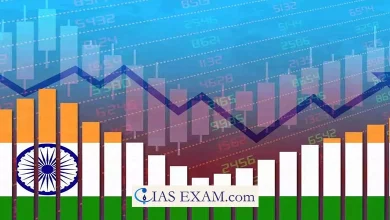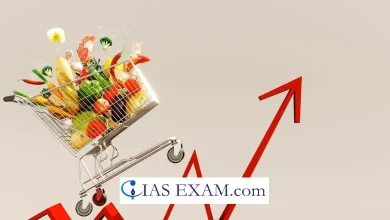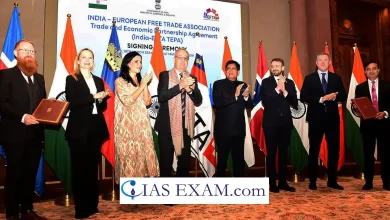India’s SDG pledge and the strategy to apply ( Syllabus- GS paper 3, Inclusive growth and issues)
Context- The Prime minister at the first meeting of finance ministers and central bank governor’s under the G 20 presidency expressed concern on slow progress of the sustainable development goals (SDG)
India’s mixed progress
- India’s sheer population size shows that its realization of the Sustainable development goals(SDGs) is intrinsically tied to its success.India is soon going to become the third largest economy in the world in the next few decades . However, India’s growth must also be translated into equal progress on social and human development as well.
The Sustainable development framework has 17 SDGs with 231 unique indicators all related to social welfare, economic development and environmental sustainability that are supposed to be met by 2030. With almost halfway to the deadline, there is a need to assess India’s progress on these indicators. The COVID-19 mobilization has demonstrated the ability of India to deliver at a large scale population that can be probably adopted to the achievement of the SDGs.
- Recent studies assessing India’s progress on 33 welfare indicators covering 9 SGDs provided a mixed picture of concern and positive trend.
- A positive thing is that India is ‘ On Target ‘ to 14 out of 33 SDGs that include indicators like full vaccination, neonatal and under -five mortality, improved sanitation and electricity access. However this does not apply equally across all districts. Like the neonatal and under five mortality is ‘On target ‘ for 286 and 208 districts respectively out of 707 districts are not.
129 districts are excluded on their course to meet the target on access to improved sanitation.
- Indicators such as reduction of multidimensional poverty, elimination of adolescent pregnancy and women having bank accounts have improved across districts between 2016 and 2021.
- Concerning areas include that despite the national policy for clean cooking fuel more than two-third of the districts are ‘Off Target’ and 278 and 415 districts are ‘Off target ‘ for handwashing facilities and water respectively.
- The heightened areas of concern are SDGs indicators on gender equality and women’s well being.
- Today no district in India has been able to eliminate the practice of child marriage before the leagal age of 18 years. More than three-fourths of districts will not be able to reduce the practice of child-marriage to the SDG target of 0.5 % by 2030.
- Other areas where india lags behind and need to escalate them as priorties include is to track child marriage along with other related and critical indicators such as partner violence( sexual and physical) and teenage pregancy( 15-19 years).
- With the high overall expansion of mobile phone access in India around 93 % of households, only 56 % of women own a mobile phone and 567 districts are ‘ Off target’.
The covid response plan- a lesson to realize SDG
- The designing and implementation of a policy response to any pressing issue is viewed as an ‘optimisation problem; that relies on responsive administration, sound data ,Political will and adequate resources.During the covid -19 India adopted the ‘optimisation approach’ and it was provided with focus and necessary resources for its success.
- There are some lessons India needs to learn from its COVID-19 strategy in order to inform and optimize its approach to SDG targets.
- First– there is a need for sustained and strong leadership supported by responsive administration structure at all levels, i.e from district to national level. Like the large scale vaccination programs and rollout of relief packages was possible because of this approach.This shall help in the creation of a similar support to accomplish India’s district level SDGs.
- Second- need for large scale digital infrastructure and other indigenous initiatives like Cowin, India needs a coordinated public data platform for population health management that is siloed into a digital resource for the national policy makers, state and district administrators.
- Finally– a need for a targeted delivery strategy like delivery of covid relief packages. The key to such relief programmes is a mix of spending to provide economic support and direct – in kind, as well as measures to revitalize the economy, agriculture and small businesses.
- Specific targets must be made with the aim to meet the needs of the vulnerable and socio- economically disadvantaged group inorder to improve their well- being.
Conclusion:
India needs an innovative policy in its path to meet the aspirations of people . In successfully delivering a real time response during covid -19 India proved that its possible to deliver at a large scale. Hence in order to meet SDG targets , especially in basic quality infrastructure, health and well being and gender equality a similar nationwide effort as that during COVID-19 is needed.






.png)



